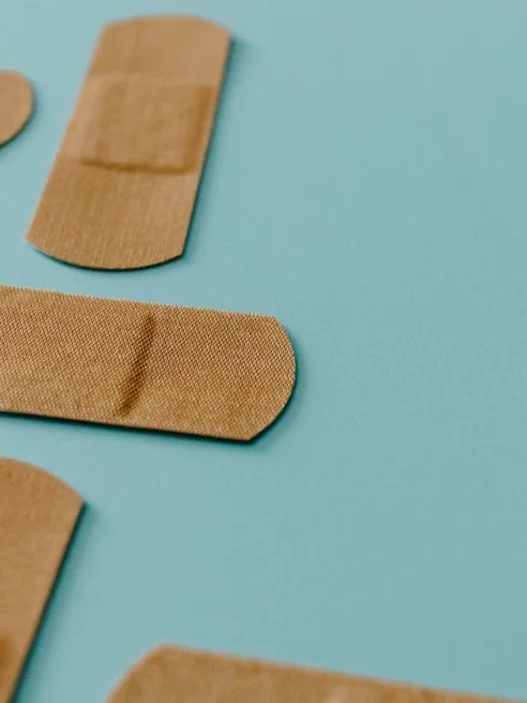In this medical procedure, a synthetic substitute is used to supplement the left hepatic duct through a minimally invasive percutaneous approach. This helps improve the flow of bile from the liver, providing relief for certain medical conditions.
Table of Contents:
- 🔎 Clinical Indication
- 📋 Preparation
- 📖 Methodology
- 🩹 Recovery
- 🚨 Complexity & Risk
- 🔀 Similar Procedures
🔎 Clinical Indication
A synthetic substitute may be used to supplement the left hepatic duct through a percutaneous approach when there is a blockage or narrowing in the duct that needs to be addressed. This procedure can help improve the flow of bile and prevent complications such as liver damage.
The percutaneous approach allows for the insertion of the synthetic substitute through the skin with the guidance of imaging techniques. This minimally invasive procedure can be an effective alternative to more invasive surgical options, resulting in reduced risk and shorter recovery times for patients.
📋 Preparation
Before undergoing the procedure to supplement the left hepatic duct with a synthetic substitute using a percutaneous approach, patients will typically be instructed to fast for a certain period of time to ensure their stomach is empty.
Additionally, patients may need to undergo blood tests to assess their overall health before the procedure. These tests can help healthcare providers determine if there are any underlying medical conditions that may affect the success of the procedure.
In some cases, patients may also need to stop taking certain medications, such as blood thinners, before the procedure to reduce the risk of complications. It is important for patients to follow their healthcare provider’s instructions closely to ensure a safe and successful procedure.
📖 Methodology
During the 0FU63JZ procedure, the surgeon will be inserting a synthetic substitute into the left hepatic duct using a percutaneous approach. This involves accessing the liver through the skin, rather than through a traditional surgical incision, making it less invasive.
The synthetic substitute is used to improve the flow of bile from the liver to the intestines in cases where there may be a blockage or narrowing in the left hepatic duct. By inserting the substitute, the surgeon can help restore proper bile flow and prevent complications such as jaundice or infections.
Overall, this procedure is a minimally invasive way to address issues with the left hepatic duct and can help improve the patient’s overall liver function and quality of life.
🩹 Recovery
After undergoing a procedure to supplement the left hepatic duct with a synthetic substitute using a percutaneous approach, patients can expect to experience some soreness or discomfort at the insertion site. This is normal and can typically be managed with over-the-counter pain medication.
Recovery after this procedure usually involves resting and avoiding strenuous activities for a few days. Patients may also be advised to stay hydrated and to follow any additional instructions provided by their healthcare provider.
It is important for patients to attend follow-up appointments as scheduled to monitor their recovery progress and to ensure that the synthetic substitute is functioning properly. If any unusual symptoms or complications arise, patients should contact their healthcare provider immediately.
🚨 Complexity & Risk
Performing 0FU63JZ, also known as Supplement Left Hepatic Duct with Synthetic Substitute, Percutaneous Approach, is a highly complex procedure that involves inserting a synthetic substitute into the left hepatic duct through a small incision in the skin.
The potential risks to patients during this procedure include infection, bleeding, damage to surrounding organs, and adverse reactions to the synthetic material used. It is important for medical professionals to carefully assess the patient’s condition and closely monitor them throughout the procedure to minimize these risks.
Due to the intricacies of 0FU63JZ and the potential for complications, it is crucial that only trained and experienced healthcare professionals perform this delicate procedure. Patients should be fully informed of the risks and benefits before undergoing this treatment.
🔀 Similar Procedures
Another medical procedure similar to supplementing the left hepatic duct with a synthetic substitute through a percutaneous approach is the placement of a biliary stent. This procedure involves inserting a small tube-like device to help keep the bile duct open and allow for proper drainage, similar to the synthetic substitute used in the previous procedure.
Both procedures aim to improve the function of the hepatic ducts by providing support or restoring proper flow of bile. Biliary stenting is commonly used in patients with blockages or strictures in the bile ducts, just like how supplementing with a synthetic substitute can help in cases of ductal stenosis or obstruction.





